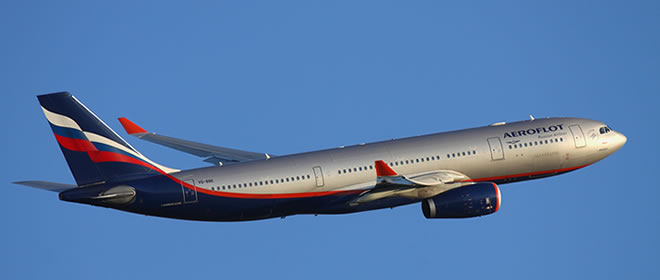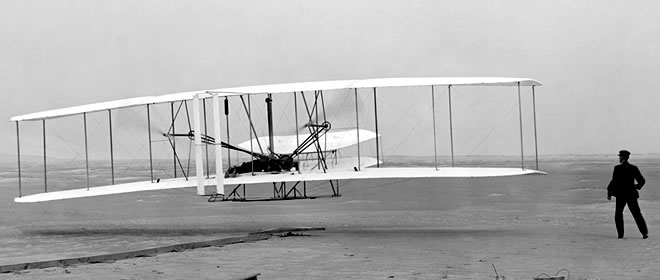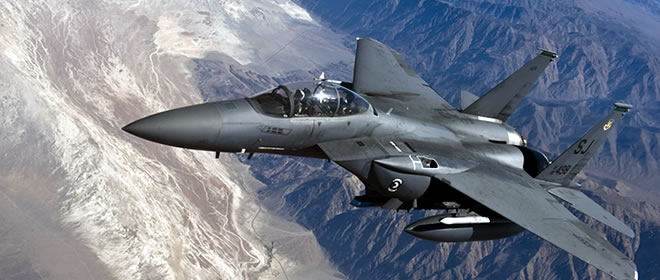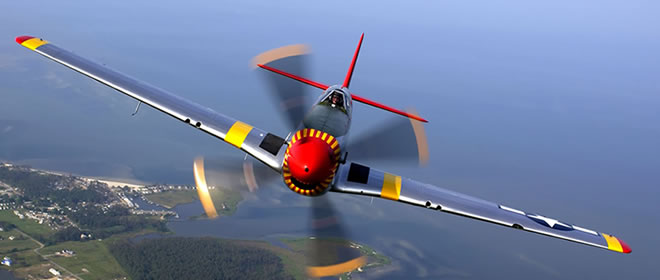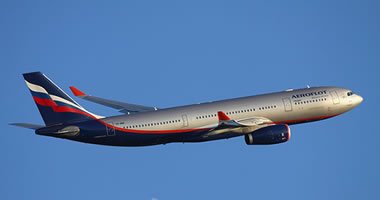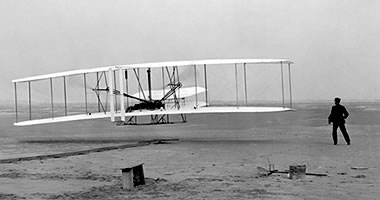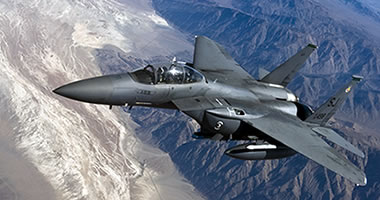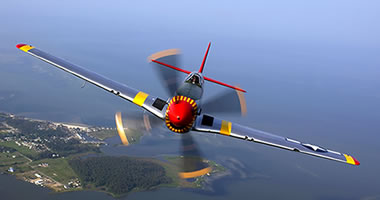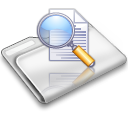Belfast International Airport
BELFAST INTERNATIONAL AIRPORT: Originally a WW1 military airfield before becoming also a civil regional airport in the mid 1930s before NEWTOWNARDS opened. Continued as a military aerodrome through to and during WW2. Then became the major BELFAST civil regional and international airport with some limited but sustained military activities
(Previously known as ALDERGROVE)
A MIKE CHARLTON GALLERY
Note: These four pictures are from a postcards, which have kindly been provided by Mike Charlton who has an amazing collection of British aviation postcards. See www.aviationpostcard.co.uk
The second picture is of a BOAC (British Overseas Airways Corporation) Vickers 1101 VC.10. BOAC operated twelve of these mostly between 1964 to 1975, one example serving to 1979. Later, BOAC operated seventeen Vickers 1151 Super VC.10s from 1965 until 1980/81. BOAC and BEA were amalgamated to become British Airways in 1974. Fourteen BA Super VC10s were sold to the RAF as transports, and later still some were converted to tankers.
The third picture is of a BEA (British European Airways) Vickers 951 or 953 Vanguard. BEA operated six 951 and fourteen 953 Vanguards from 1960 until 1974
Known more recently solely as BELFAST INTERNATIONAL AIRPORT. However, it appears that airline services, even in 2017, only included one long haul operation - by Virgin Atlantic.
MORE PICTURES
Note: In February 2018 Mike Charlton very kindly sent me these two pictures from postcards which he had come across. In December 2018 Mike sent me the third picture.
PICTURE GALLERY FROM 2017
Note: Pictures by the author.
Note: The main reason for including the second picture is because I was intrigued by the Boeing 737 with '6695' on the tail. Can anybody kindly identify this aircraft - exact type and owner?* If so the advice will be appreciated - and yes, it does seem approaching my 70th birthday, that I really am becoming an 'anorak'. Although still a beginner of course. (*See note at end of listing)
Another point, regarding the fifth picture, is that is clearly evident that easyJet have a dominant presence at this airport. And indeed, I have never seen a single airline having such a presence at any other international airport. But, why did somebody decide that two identical information boards, placed next to each other, was a desirable feature?
Military users: WW1: RAF Aircraft Acceptance Depot (1918 to 1921)
1925: Formation of No.502 Sqdn (Ulster) Auxiliary Air Force (DH.9As). By 1934 flying Vickers Virginias.
WW2: RAF Fighter Command 13 Group
*Battle of Britain RAF Sector Station (ALDERGROVE)
(1st August 1940) 13 Group
245 Sqdn (Hawker Hurricanes) Posted across from TURNHOUSE, LOTHIAN
OTHER SQUADRONS IN WW2
RAF Coastal Command 15 & 17 Groups
86 Sqdn (Consolidated B-24 Liberators)
120 Sqdn (Consolidated B-24 Liberators)
143 Sqdn (Bristol Blenheims)
206 Sqdn (Lockheed Hudsons (?), later Consolidated B-24 Liberators)
252 Sqdn* (Bristol Beaufighters)
502 (Ulster) Sqdn (Avro Ansons later Blackburn Botha & Armstrong Whitworth Whitleys)
1402 Met. Flight (Gloster Gladiators, Hawker Hurricanes & Vickers-Supermarine Spitfires)
1405 Met. Flight (Bristol Blenheims & Lockheed Hudsons)
1674 HCU (Consolidated B-24 Liberators)
1 Armament Practice Camp (Westland Lysanders & Miles Martinets)
Post 1945: 518 Met Sqdn (Handley Page Halifaxs, Hurricanes and Spitfires)
1950s: 202 Sqdn (Handley Page Hastings)
'V' Bomber dispersal airfield
72 Sqdn (DH Vampires, Gloster Meteors and Gloster Javelins)
Note: I am not at all sure that 72 Squadron flew all these three types here.
664 VGS (655 and 665 Squadrons Post 1945?)
228 Sqdn (Bristol Sycamore helicopters)
1975: Listed as being a RAF Storage Unit
1980s: 72 Sqdn (Westland Wessex)
665 Sqdn (Gazelle/Lynx)
FNIR (Brittan-Norman Defenders)
1998 snapshot: RAF Support Helicopters
72 Sqdn (15 x Wessex HC 2 5 x Puma HC 1
230 Sqdn 15 x Puma HC 1
Operated by: 1965: Air Ministry / Ministry of Aviation
1970s to 2001: Northern Ireland Airports Ltd (later Belfast International Airport)
British airline users: Pre 1940: Air Commerce (?), Blackpool & West Coast Air Services, Hillman’s Airways, Midland & Scottish Air Ferries, Railway Air Services
Post 1945: Air 2000, Air Commerce, Air Safaris, Airtours International, Air Ulster, Autair, Aztec Air (Air Bristol), BKS (?), Britannia Airways, British Airways (BA), British Caledonian Airways, BEA, British Eagle, British Island Airways, British Midland Airways, British United Airways, British World Airlines, Business Air, Cambrian Airways, Channel Express, Derby Airways, easyJet, Emerald Airways, Gill Aviation, Jersey Airlines (?), Jet2, Maersk Air (Blue Star), Northeast, Thomas Cook, Thomson, Virgin Atlantic and West Coast Air Services
Foreign airline users: Post 1945: Aer Lingus, Air Canada, Air Club International, American Trans Air (Amtran), Balkan-Bulgarian Airlines, Futura, Irish International, Istanbul Airlines, KLM, Ryanair, Wizz Air
Flying club/schools: Post 1945: Belfast Flying Club, WEAC Flight Training (1969)
Cargo, charter, air taxi: Post 1945: Aer Turas, Air Bridge Carriers, Air Ulster, Alidair, Britannia Airways, British Caledonian Airways, Channel Airways, Emerald Airways, Hot Air, Laker Airways, Overseas National Airways, Transinternational Airlines, TNT International
Maintenance: Post 1945: Woodgate Air Maintenance
Manufacturing: 1918-1919: Harland & Wolff
WW2: Short & Harland
Location: W of A57, 11nm NW of Belfast city
Period of operation: 1918 to present day
Airfield area: WW1 + : 360 acres 1280x1097 grass
Runways: 1934: SE/NW 823 grass N/S 823 grass
E/W 549 grass
Note: These maps are reproduced with the kind permission of Pooleys Flight Equipment Ltd. Copyright Robert Pooley 2014.
WW2: 08/26 1828x46 hard 18/36 1828x46 hard
1965: 08/26 1830x46 hard 17/35 1835x46 hard
1990: 07/25 2777x46 hard 17/35 1951x45 hard
2000: 07/25 2780x46 hard 17/35 1951x46 hard
NOTES: From 1916 Harland and Wolff built a large number of aircraft, some 300 Airco DH.6 and at least 505 Avro 504J/K which were presumably delivered here? Or delivered in component form to somewhere in England for assembly? The question being I have this site listed as being an RAF Acceptance Depot from 1918 to 1921. But, the DH.6s were produced in or from 1916.
Later in WW1 twenty Handley-Page V/1500 ‘giant’ bombers were built here. It appears the first three were assembled at CRICKLEWOOD (LONDON) but the next five were assembled and flown out from ALDERGROVE, the remainder delivered as spares.
EARLY AIRLINE HISTORY
There is enormous confusion to be found in the subject of exactly where the airlines of the 1930s actually operated from regarding Belfast. For example did Hillman’s Airways operate from ALDERGROVE or NEWTOWNWARDS or perhaps even both? The destination was referred to as BELFAST which doesn’t help at all. What does appear to be the case is that Midland & Scottish Air Ferries commenced a service from RENFREW on the 30th May 1933 with their Avro X G-ACGF. It now appears they operated from ALDERGROVE.
Neville Doyle in his excellent book The Triple Alliance has no doubt at all that after taking over the MSAF service to Belfast in July 1934, they landed at ALDERGROVE: “The surface was ‘loam on clay’ and sloped downwards from the eastern and western boundaries to form a central depression running north and south. Most of the surface was ‘ridge and furrow’ and the landing area was in the eastern half. ‘Landings must be effected with great care’ and there were warnings of marshy patches in the western half, as well as “a hole” in the NW corner, and deep hedge-bordered ditches in the SW quarter.’
Airline operators were looking forward to the soon to be opened new aerodrome at Newtownards, not least because of Aldergrove’s location which was 12nm West of Belfast. A convenient landmark was Lough Neagh, the largest lake in the British Isles, 2nm to the west. There were the usual RAF hangars, messes and so forth, and in 1934 it was home of the Vickers Virginias of 502 Squadron”.
SOMETHING TO EXPLAIN?
So – it seems fairly clear, in the mid 1930s that NEWTOWNARDS was going to be the ‘new’ Belfast airport, taking over from ALDERGROVE. Can anybody explain why the decision, later on, to develop ALDERGROVE as the major airport after WW2 was taken?
Assuming ALDERGROVE was the airport used (?) Railway Air Services started a service on the 20th August 1934: CROYDON – Birmingham (CASTLE BROMWICH) – Manchester (BARTON) – Belfast – Glasgow (RENFREW) using two DH.86s, G-ACPL and G-ACVY. In addition a freight and mail service was started using the DH.84 Dragon G-ACXL from Manchester (BARTON) via the Isle-of-Man (RONALDSWAY).
There are several examples of airlines sharing military aerodromes going back to just after WW1. Indeed, the first recognisable ‘civil airline’ operations in the UK were flown by the RAF, using RAF aircraft with RAF aircrew! See KENLY (SURREY) for an example.
A BIT OF MILITARY HISTORY
In September 1940 Armstrong Whitworth Whitley V bombers superseded Avro Ansons in 502 Squadron here to undertake Coastal Command duties. 502 Squadron Whitley G.R.VII versions were the first Coastal Command aircraft to carry the long-range A.S.V. Mk.II radar equipment.
*It appears that RAF Coastal Command’s first Beaufighter squadron was based here, operational from April 1941. Their task, (mostly thankless I’d imagine?), was to seek out Luftwaffe Focke-Wulf Fw200 long-range reconnaissance aircraft who were aiding U-boats attacking Atlantic Allied convoys. However, it is claimed they were effective, but in this sort of war a deterrent can be as effective as actually intercepting and destroying aircraft, as witnessed by airship patrols seeking out submarines in WW1.
ATFERO
In WW2 it appears that ALDERGROVE was the initial choice to provide the main base for ATFERO, the trans-Atlantic ferry operations, a typically very stupid choice considering the prevailing weather conditions. According to opinions it does seem that this operation transferred to PRESTWICK (AYRSHIRE) mostly due to the amount of crews who diverted there?
A 'MEDA' CHOICE
In the 1960s RAF ALDERGROVE was nominated as one of four MEDA (Master Emergency Diversion Airfields) in the UK. This said it had the second shortest runway of the four at 2777 metres? (Was it this long in the 60s?). The other three were RAF MACHRIHANISH (ARGYLLSHIRE) with 3049 metres available, RAF GREENHAM COMMON (BERKSHIRE) – then a USAF base with a 3000 metre runway with 300 metre ‘overshoot’ extensions at both ends added in 1958. The fourth was RAF MANSTON (KENT) but this runway is very deceptive. It may ‘only’ be 2752 metres long and usually listed as 61 metres wide, (the licensed part of the runway), but in fact the width of the entire paved area is a whopping 229 metres wide! Without much doubt the widest in Europe?
CIVIL AIRLINE OPERATIONS
I have seen it said that this airport started civil operations in 1962, but is this correct? BKS for example were flying thrice weekly scheduled services from SOUTHEND via YEADON (LEEDS-BRADFORD) to Belfast from May 1955, presumably using NUTTS CORNER?
Note: This map is reproduced with the kind permission of Pooleys Flight Equipment Ltd. Copyright Robert Pooley 2014.
SOMETHING OF INTEREST?
It seemed to me that those too not familiar with aviation matters, might well be interested to see a map such as this, which shows how airspace can be divided up into controlled segments. Even a private pilot wishing to land within or even fly across this airspace has to be fully coversant with the area and the regulations that apply. For commercial pilots this is elementary stuff, but of course, they will normally be guided by ATC under radar control, which usually makes their task so much easier. But, it is the flight crews responsibility to check that their clearances from ATC are correct.
And, please do not forget, that this particular area of airspace is far from being the busiest or complex in the UK. Just to explain, a TMA is a Terminal Manouvering Area, a CTR is a Control Zone, a CTA a Common Travel Area and VRPs are Visual Reporting Points typically used by private pilots wishing to enter controlled airspace.
ALDERGROVE in 1974
It seems well worth quoting this from UK & EIRE Commercial Airports published by Airline Publications & Sales.
"Handling a wide variety of light, commercial and military types, together building up to a movement rate of well over 100 per day throughout the summer months, Aldergrove succeeded Nutts Corner as the Belfast Airport in September 1963. Scheduled services are mainly within the United Kingdom and Ireland, flown by Aer Lingus and several British operators using, for the most part, the Trident, One-Eleven, Viscount and Herald. Direct links with transatlantic services are provided by British Airways 701 feeder operation to Prestwick (daily in summer months), together with Aer Lingus connections via Shannon."
"Aircraft on inclusive tour work to European resorts are regularly to be seen, whilst there are occassional visits by US "supplemental" carriers also. The main runway was extended to 9,110ft, (My note: 2777 metres), in 1971, opening up the airport to direct transatlantic operations."
MILITARY INVOLVEMENT
"Military aircraft, including most R.A.F. passenger/freight transports, helicopters and more potent hardware such as the F-4 Phantom, Canberra and Hunter, make regular appearances here. These movements centre around two Service units basede on the airport, the No.72 Army Air Squadron and No.23 Maintenance Unit (R.A.F.). Most frequently to be seen on visits to the latter are F-4 Phantoms, Hercules and Varsity aircraft."
"About 600 movements per month in the summer are made up of light and executive aircraft."
RESIDENT LIGHT AIRCRAFT IN 1974
It appears these were the Piper PA-23 Apache 235 235 G-ATHA (Woodgate Aviation), Piper PA-28 Cherokee 140 G-ATMV, Piper PA-E23 Aztec 250C G-AWER and the Piper PA-28 Cherokee 180G G-AZVV.
In addition the Piper PA-28 Cherokee 140F G-BAKH, Piper PA-28 Cherokee 140F Cruiser G-BAWK, Piper PA-28 Cherokee 140 G-ATON and the Piper PA-28R Cherokee Arrow 180 G-AWBB. I think it is, for a reason unknown (?) rather interesting to see that all the light aircraft types were from PIper. I suspect this situation might well have been unique in the UK at that time?
*A QUERY SOLVED
Regarding the, (to me), mystery 737 with '6695' on its tail, in July 2022 I was kindly contacted by Mr Jonathan Horswell. He tells us that this is the Boeing C-40 Clipper, of the U.S. Navy. (Serial 166695). This being a military version of the Boeing B737-700 series and used for ferrying top brass, V.I.P.s and small cargo. It was delivered to the U.S. Navy in 2011.
Robert Farquharson
This comment was written on: 2020-03-23 18:36:51Railway Air Services used Aldegrove from 20th August 1934 until 23 May 1936. They used Newtonards Airport from the 25th May 1936 to 30 April 1938. Harbour Airport (Sydenham) was used from 2 May 1938 to 14 December 1946. Source: John Stroud: Railway Air Services. Appendix 9 Aerdromes and Airports.
We'd love to hear from you, so please scroll down to leave a comment!
Leave a comment ...
Copyright (c) UK Airfield Guide
